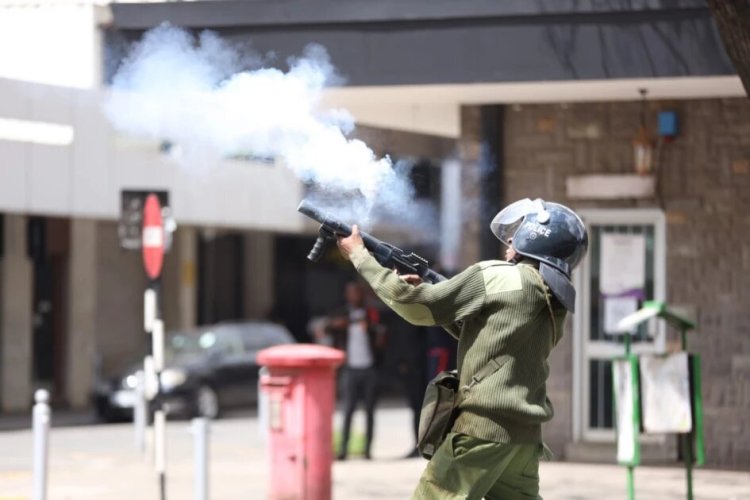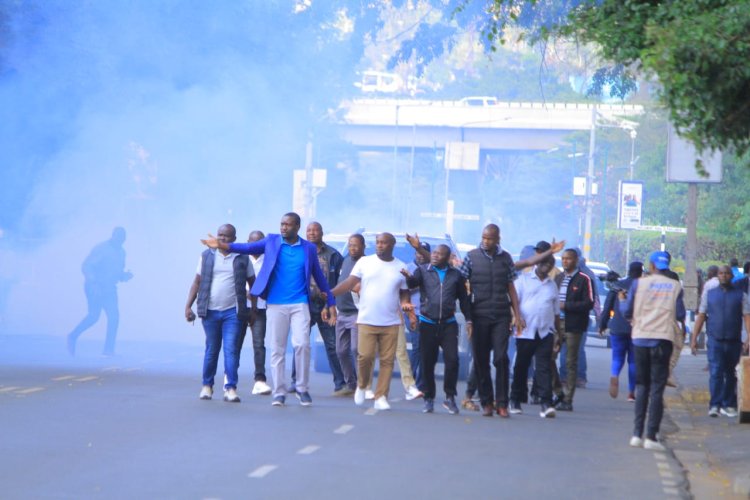Cop Fires Teargas In Nightclub Where Girlfriend Was Cheating On Him
The officer trailed her to the hotel but was reportedly blocked by a watchman.

A police officer in Kisumu County was on Tuesday morning, April 11 clobbered by local revellers after lobbing teargas at a local club where his girlfriend was with another man.
According to reports, the first incident occurred when the officer wanted to access Oliza's hotel upon receiving intelligence that the lover had booked a room with the man.
The officer trailed her to the hotel but was reportedly blocked by a watchman. It was at this point that an argument ensued between the two.
The guards had ejected him from the premises, but the officer was enraged and fired a teargas canister at the joint before fleeing on his motorbike.

Image of a nightclub in Kisumu. /FILE
At around 3:00 am, the officer tracked his girlfriend to the nightclub along Kisumu-Nairobi Highway and instantly walked in while trying to locate her in the sea of revellers who were dancing.
Minutes later, the police officer reportedly fired another teargas canister which rattled the entire club, and its revellers scampering for safety.
A section of the partygoers had cornered him while he was trying to escape the scene and descended on him with heavy kicks and blows. Fortunately, the officer was saved by his colleagues who were responding to a distress call.
The police officer was rushed to Jaramogi Oginga Odinga Teaching and Referral Hospital for medical attention as authorities launched investigations into the incident.
Teargas is also referred to as a riot control agent and is a chemical weapon that is illegal to use in wars, but legal in many countries if used to disperse crowds and de-escalate protests.
According to the Centre for Disease Control and Prevention (CDC), riot control agents are chemical compounds that temporarily make people unable to function by causing irritation to the eyes, mouth, throat, lungs, and skin.
Several different compounds are considered to be riot control agents. The most common compounds are known as chloroacetophenone (CN) and chlorobenzylidenemalononitrile (CS).
Other examples include chloropicrin (PS), which is also used as a fumigant (that is, a substance that uses fumes to disinfect an area); bromobenzylcyanide (CA); dibenzoxazepine (CR); and combinations of various agents.
Riot control agents are used by law enforcement officials for crowd control and by individuals and the general public for personal protection (for example, pepper spray). CS is also used in military settings to test the speed and ability of military personnel to use their gas masks.
Experts warn that there should be controlled use of it, raising concerns about the effects the substance could have on young children as well as the implications of long-term exposure for the population.
Lung experts further reveal that children are uniquely vulnerable to the physiological effects of chemical agents. A child’s smaller lung size compared to adults magnifies the harm of agents such as teargas.
"You wouldn’t want to use this agent indoors, especially on a child. If that child was left there unattended then it’s almost next to impossible for this child not to be exposed to the lethal consequences of these agents," Dr Andrew Owuor, a respiratory specialist, told Citizen TV.







